
Transcription
HS 7/7
Name- Goehler
Reading Guide due Class Period 10: Integration of self-awareness topics
Directions: In preparation for the class discussions, please complete the following before the 9th class.
Introduction into the reading: One difference between self-awareness and self-development is the element of change. Throughout the semester we have discussed numerous areas of self-awareness (i.e., values, beliefs, biases, cultural worldview, learning styles, emotional intelligence, emotional regulation, metacognition, neuroscience, personality, belongingness, managing conflict, and signs/causes of burn out). Now, we will continue to focus on ways you, both professionally and personally, can move beyond self-awareness into self-development. To do this, you will read supplement #19 and review concepts covered earlier in the semester.
Read supplement #19: Personal goal setting: Planning to live your life your way (p. 32-34)
A. In reference to paragraph 2, p. 32: What is the purpose of goal setting? Motivation.
By knowing precisely what you want to achieve (Intention) you know where to concentrate your efforts and/or spot distractions.
B. In reference to paragraph 3, p. 32: What are some of the reasons for setting goals?
Short term motivation toward long-term vision.
C. In reference to the end of p. 32-beginning of p. 33: Describe the purpose of and areas in which a person would set lifetime goals.
Setting goals toward long-term vision, shapes all other aspects of decision making in re: Education/Career/Financial responsibilities/Physical & mental health/Family commitments/etc.
D. Reflection: Choose a few areas from the lifetime goal areas and brainstorm some potential goals you would like to achieve.
As an agonist striving to rise above the wage-slave mentality, education has been my lifetime goal. Learning by experience required me to also rise above the neurotic consequence of challenging status quo. All to make the world a better place.
(These sound like you've already achieved them.)
E. Distinguish setting smaller goals from setting lifetime goals.
Smaller goals work toward lifetime goals. Lifetime goals give a broad coverage of important things and areas you want to achieve in life. Short term goals help reach a lifetime plan.
F. What techniques can a person use for "staying on course" toward goal achievement.
Frequent review of intents concentrated efforts and modify as necessary, using the S.M.A.R.T. method.
Name- Goehler
G. List and describe each of the portions in a SMART goal.
S = Specific (or Significant)
M = Measurable (or Meaningful)
A = Attainable (or Action-oriented)
R = Relevant (or Rewarding)
T = Time bound (or Trackable)
H. Write 1 or 2 SMART goals for yourself.
1 - Specifically intend to avoid traps of other-determined purposes in life. This is measurable, attainable and relevant to the degree of self-determinism is maintained investing time toward personal activities.
I. Read through the remainder of p. 33 and 34. What do you find helpful or interesting in this section of the article?
Setting and achieving goals as compared to going with the flow is a demonstration of will and knowledge. It's interesting the article points out to "enjoy the satisfaction of achieving goals", because (see below)
J. *What are your thoughts and feelings regarding using goal setting as a way to accomplish personal/professional growth?
I think that we all get what we deserve in life. The hell of this is once we achieve our ambition, regretting it and desiring the green grass on the other side of the fence. (interesting philosophy)
Connecting to previous reading. Explain how this article (#19) is similar to, adds to, or is different than the information you read earlier this semester in the following areas:
1. The characteristics of helpers
Obviously #19 provides an investigative approach to coach utilizing the SMART model.
2. The GROW model
Again, utilizing the SMART model. What options should be considered - and what "specifically" is necessary to achieve goals?
3. The experiential learning cycle
#19 makes us mindful of long term goals and re-consider if smaller goals have served to keep you on course - or determine what modifications are necessary to do so.
4. Emotional intelligence
Self Awareness = Responsibility in managing relationships involved in living life your way.
5. Neuroplasticity and learning
That which doesn't kill you permits you to try - try again! Learning by experience means that you can modify plans.
Name- Goehler
6. Belongingness and conflict resolution
#19 permits Awareness of initial intent to live, and in that awareness one confidently maintains the course by reviewing and modifying priorities as heed be, and allowing others theirs.
7. Rewiring the brain to address burn-out
#19 reminds you of a SMART remedy to self-management. Reset responses from retreat to IGNITE!
8. Using visualization
#19 SMART approach permits specific meaningful actions to pre-determine reward accomplishments of self-determined goals.
9. Using radical self-acceptance
I am the god of my own existence and live life my own way. The grass may be greener else where, but I've made this bed here now. Living in the present is the best revenge.
Areas for growth: throughout the semester, you have learned a lot of psychological concepts that have increased your self-awareness. At the same time, you have reflected on how the concepts relate to your life. Through reading and class discussions, you have also likely identified areas where you would like to grow, make changes, or develop. List a few of those areas below.
Moving beyond self-awareness into self-development may conflict with radical self-acceptance, I think. We'll see.
--> Interesting perspective... Does radical acceptance mean seeing self as perfect or something else? (Forgive the scribbles, this pen is having problems)
Supplement #15
The Tell Tale Signs of Burnout ... Do You Have Them?
By Sherrie Bourg Carter
Retrieved from https://www.psychologytoday.com/blog/high-octane-women/201311/the-tell-tale-signs-burnout-do-you-have-them
Burnout is one of those road hazards in life that high-achievers really should be keeping a close eye out for, but sadly - often because of their "I can do everything" personalities - they rarely see it coming. Because high-achievers are often so passionate about what they do, they tend to ignore the fact that they're working exceptionally long hours, taking on exceedingly heavy work loads, and putting enormous pressure on themselves to excel - all of which make them ripe for burnout.
What is burnout?
Burnout is a state of chronic stress that leads to:
- physical and emotional exhaustion
- cynicism and detachment
- feelings of ineffectiveness and lack of accomplishment
When in the throes of full-fledged burnout, you are no longer able to function effectively on a personal or professional level. However, burnout doesn't happen suddenly. You don't wake up one morning and all of a sudden "have burnout." Its nature is much more insidious, creeping up on us over time like a slow leak, which makes it much harder to recognize. Still, our bodies and minds do give us warnings, and if you know what to look for, you can recognize it before it's too late.
What are the signs of burnout?
Each of the three areas described above is characterized by certain signs and symptoms (although there is overlap in some areas). These signs and symptoms exist along a continuum. In other words, the difference between stress and burnout is a matter of degree, which means that the earlier you recognize the signs, the better able you will be to avoid burnout (IF you do something to address the symptoms when you recognize them).
Signs of physical and emotional exhaustion:
- Chronic fatigue. In the early stages, you may feel a lack energy and feel tired most days. In the latter stages, you feel physically and emotionally exhausted, drained, and depleted, and you may feel a sense of dread for what lies ahead on any given day.
- Insomnia. In the early stages, you may have trouble falling asleep or staying asleep one or two nights a week. In the latter stages, insomnia may turn into a persistent, nightly ordeal; as exhausted as you are, you can't sleep.
- Forgetfulness/impaired concentration and attention. Lack of focus and mild forgetfulness are early signs. Later, the problems may get to the point where you can't get your work done and everything begins to pile up.
- Physical symptoms. Physical symptoms may include chest pain, heart palpitations, shortness of breath, gastrointestinal pain, dizziness, fainting, and/or headaches (all of which should be medically assessed).
- Increased illness. Because your body is depleted, your immune system becomes weakened, making you more vulnerable to infections, colds, flu, and other immune-related medical problems.
- Loss of appetite. In the early stages, you may not feel hungry and may skip a few meals. In the latter stages, you may lose your appetite all together and begin to lose a significant amount of weight.
- Anxiety. Early on, you may experience mild symptoms of tension, worry, and edginess. As you move closer to burnout, the anxiety may become so serious that it interferes in your ability to work productively and may cause problems in your personal life.
- Depression. In the early stages, you may feel mildly sad, occasionally hopeless, and you may experience feelings of guilt and worthlessness as a result. At its worst, you may feel trapped, severely depressed, and think the world would be better off without you. (If your depression is to this point, you should seek professional help immediately.)
- Anger. At first, this may present as interpersonal tensions and irritability. In the latter stages, this may turn into angry outbursts and serious arguments at home and in the workplace. (If anger gets to the point where it turns to thoughts or acts of violence toward family or coworkers, seek immediate professional assistance.)
Signs of Cynicism and Detachment
- Loss of enjoyment. At first, loss of enjoyment may seem very mild, such as not wanting to go to work or being eager to leave. Without intervention, loss of enjoyment may extend to all areas of your life, including the time you spend with family and friends. At work, you may try to avoid projects and figure out ways to escape work all together.
- Pessimism. At first, this may present itself as negative self-talk and/or moving from a glass half-full to a glass half-empty attitude. At its worst, this may move beyond how you feel about yourself and extend to trust issues with coworkers and family members and a feeling that you can't count on anyone.
- Isolation. In the early stages, this may seen like mild resistance to socializing (i.e., not wanting to go out to lunch; closing your door occasionally to keep others out). In the latter stages, you may become angry when someone speaks to you, or you may come in early or leave late to avoid interactions.
- Detachment. Detachment is a general sense of feeling disconnected from others or from your environment. It can take the form of the isolative behaviors described above, and result in removing yourself emotionally and physically from your job and other responsibilities. You may call in sick often, stop returning calls and emails, or regularly come in late.
Signs of Ineffectiveness and Lack of Accomplishment
- Feelings of apathy and hopelessness. This is similar to what is described in the depression and pessimism sections of this article. It presents as a general sense that nothing is going right or nothing matters. As the symptoms worsen, these feelings may become immobilizing, making it seems like "what's the point?"
- Increased irritability. Irritability often stems from feeling ineffective, unimportant, useless, and an increasing sense that you're not able to do things as efficiently or effectively as you once did. In the early stages, this can interfere in personal and professional relationships. At its worst, it can destroy relationships and careers.
- Lack of productivity and poor performance. Despite long hours, chronic stress prevents you from being as productive as you once were, which often results in incomplete projects and an ever-growing to-do list. At times, it seems that as hard as you try, you can't climb out from under the pile.
If you're not experiencing any of these problems, that's great! However, you should keep these warning signs in mind, remembering that burnout is an insidious creature that creeps up on you as you're living your busy life.
If you are experiencing some of these symptoms, this should be a wake-up call that you may be on a dangerous path. Take some time to honestly assess the amount of stress in your life and find ways to reduce it before it's too late. Burnout isn't like the flu; it doesn't go away after a few weeks unless you make some changes in your life. And as hard as that may seem, it's the smartest thing to do because making a few little changes now will keep you in the race with a lot of gas to get you across the finish line.
Supplement #16
Rewire Your Burned-Out Brain
By Judy Willis M.D., M.Ed., Posted Sep 18, 2017
Retrieved from https://www.psychologytoday.com/blog/radical-teaching/201709/rewire-your-burned-out-brain
Burnout often results from extended periods enduring the emotional stress precipitated by unaccomplished expectations or failure to fulfil unreasonable demands. The symptoms can include intensified emotional exhaustion, physical fatigue, lowered self-worth, changes in eating and exercising habits, social withdrawal, sleep disorders, anxiety, and depression.
If You're Burned Out, Your Brain Has Rewired to Survival Mode
There are specific and reproducible patterns of changing neural activity and brain connectivity associated with the stress buildup that leads to burnout. In the high-stress state subjects' neuroimaging scans reveal less activity in the higher, reflective brain (Prefrontal cortex/PFC) and more activity in the lower, reactive brain that controls involuntary behaviors and emotional responses.
Prolonged stress correlates with structural increases in the density and speed of the neuron-to-neuron connections in the emotion-driven reactive networks of the lower brain and corresponding decreases connections in prefrontal cortex conscious and reflective control centers.
The explanation of these changes is attributed to the brain's neuroplasticity defined by the phrase: "neurons that fire together, wire together." The brain literally rewires to be more efficient in conducting information through the circuits that are most frequently activated.
When stress is frequent, the more frequent activation of the neural pathways to the lower, stress-reactive brain results in their strengthening from enhancing wiring (dendrites, synapses, myelinated axons). These pathways can become so strong that they become your brain's fast route to its lower, reactive control centers. The stressful, burned out state when the lower, reactive brain is in charge overcomes the calm, reflective, and productive higher neural processing in the (PFC) - the preferred brain locale for control of behavior and emotional self-management.
As your efforts to achieve unreasonable goals are thwarted or increasing demands recur, and the lower brain dominates more frequently, you lose touch with your reflective brain. With less management coming from your reflective PFC, it becomes harder and harder to logically see these challenges in realistic perspective or to solve problems creatively.
Disappointments take on more emotional power and without your higher brain's perspective, they are interpreted as personal failures. Your self-doubt and stress further activate and strengthen your brain's involuntary, reactive neural networks. The spiral down to burnout accelerates as these circuits become the automatic go-to networks. Your brain achieves less success in problem-solving and emotional control and ultimately reacts by withholding efforts to escape the burnout state.
Reset Your Brain's Default Neural Network from Retreat to IGNITE! Something CAN Be Done!
The good news is you can apply what we've learned from neuroscience about your brain's survival mode to take actions to retrieve voluntary control of your choices and emotional wellbeing.
You can activate the same neuroplasticity, that gave dominance to the lower brain networks in the burnout state, to construct a new, stronger positive default response. With increasing successful experiences in achieving goals, you can reset the circuits to redirect your brain to access its highest cognitive resources. You can build up newly improved circuitry switching your responses from retreat to IGNITE for mindful awareness and creative problem-solving!
Since an effort-failure patterns sets up the brain's survival response to withhold effort, you'll need to strengthen your brain's recognition that effort toward your goals can result in success. Your weapon of mass reconstruction can come from your brain's very powerful drive for its own intrinsic neurochemical reward - dopamine and the deeply satisfying and motivating pleasure it brings. When the brain releases dopamine in rewarding bursts, you experience a deep intrinsic satisfaction along with increased motivation, curiosity, perseverance, and memory. Dopamine is particularly released when your brain recognizes that you've achieved a challenge (from the "I get it" of figuring out a joke to the satisfaction of completing a marathon).
To get the dopamine-pleasure response from challenges achieved, you'll need to plan for you brain to experience frequent recognition (feedback awareness) of incremental progress. The choices of what you set as a goal should be guided by their desirability and the goal's suitability to be broken down into clear segments. You want to set goals, the progress of which, you can chart or easily recognize with each stepwise challenge and success. The pleasure burst of dopamine's intrinsic motivation accompanying your brain's recognition of each progressive increment achieved in the goal pathway will keep you motivated to persevere.
Goal Buy-In for Your Brain's Neural REWIRING
Buy-in and relevance are important in choosing your rewiring goal. Since your goal is to rewire your brain's expectations that your goal efforts do yield progress, despite increasing challenge, you need to really want the goal. This is not the time to challenge yourself with something you feel you should do, but won't really look forward to, such as dieting, climbing stadium stairs, or flossing after every meal.
The idea of planning and achieving goals as a burnout intervention is probably not new to you. These are likely to be activities you've considered but didn't do for the obvious reason. They take time, when it comes to adding another activity to your schedule, past experiences have left you with the expectation that there is not enough time.
These first goals that can provide ongoing awareness of your progress are often tangible (visible, such as planting a garden or making pottery on a wheel, or auditory such as playing an instrument, or physical such as learning tai chi), but your goal can also be spending more time at something you already do, but want to do more frequently or successfully, such as journaling, practicing yoga, or sketching.
You'll Find Your Own Goal for Buy-In, but Here are Some Examples of Planning
Physical goals: Notice I didn't say exercise. That's not as motivating as "training" for a physical goal you want to achieve, even though they often overlap. If you want to run a 10K, and you enjoy running, the goal for an achievable challenge could first be building up to the distance starting with your baseline distance you comfortably run now. Then, plot out the increments that you'll consider progressive successes, such as adding 100M each day or a week (with increments based on what you consider both challenging and achievable). Once you reach 10K goal, speed can become the next goal again plotted out in segments of incremental progress before you start.
Hobbies: From woodworking to shooting wooden arrows, hobbies really are opportunities for brain rewiring. Again, plan your stepwise achievable challenge increments. If you select darts, start with a home dartboard - low initial investment and throw from a close, but challenging distance at first. As you get better in accuracy move back further. Record your results with the notations of the distance of each improvement you set as an achievable challenge. If you get so good that you are no longer challenged by the dartboard, try that archery!
Mindfulness and meditation are certainly positive interventions for burnout and will be topics of a subsequent blog.
Your Rewired Brain's Default Changes from Defeat to Ignite
With your understanding of what happened in your brain to create the hopeless frustration of burnout, you'll hopefully have more positive expectations to help you put in the effort to try (or retry) suggested interventions. Your own natural dopamine-reward system will then be at work deconstructing the resistance network built by your burnout as you reset your circuits of motivation.
The repeated experiences of dopamine-reward you'll experience as you monitor your goal progress will literally change your brain's circuitry. Repeated effort-reward experiences promote the neuroplasticity creating neural networks that expect positive outcomes in your new default network. This is because your brain will build stronger connections into the memory pattern. The expectation in achieving this challenge will bring pleasure. As with other less used networks, the previous lower brain stress-activated go-to response network you developed in burn-out, that caused you to react negatively to stressors, will be pruned away from disuse.
You'll be rewired with optimism and renew positive expectations about your self-efficacy. With your higher, reflective brain back in control, as you access your perseverance, innovation, and creative problem-solving when you need them. Just be sure to take the time to break down big challenges into opportunities to recognize incremental progress as you achieve each small step en route to your goals. With that positive recharge, your well-deserved dopamine reward will sustain your brain's motivated perseverance on to the next step of the path to your goals.
To INFINITY! and beyond.
- Buzz Lightyear
Supplement #17
Seeing Is Believing: The Power of Visualization
By AJ LeVan
Retrieved from https://www.psychologytoday.com/blog/flourish/200912/seeing-is-believing-the-power-visualization
Despite the great case for getting off our duffs, there are some amazingly cool and effective practices we can do from the comfort of our own recliners - without even budging a finger. For instance, you could practice your golf swing, work out your muscles, prepare to climb Mount Kilimanjaro, hone your chess skills, practice for tomorrow's surgery, and you can even prepare for your best life!
Mental practice can get you closer to where you want to be in life, and it can prepare you for success! For instance, Natan Sharansky, a computer specialist who spent 9 years in prison in the USSR after being accused of spying for US has a lot of experience with mental practices. While in solitary confinement, he played himself in mental chess, saying: "I might as well use the opportunity to become the world champion!" Remarkably, in 1996, Sharansky beat work champion chess player Garry Kasparov!
A study looking at brain patterns in weightlifters found that the patterns activated when a weightlifter lifted hundreds of pounds were similarly activated when they only imagined lifted. In some cases, research has revealed that mental practices are almost effective as true physical practice, and that doing both is more effective than either alone (link is external). For instance, in his study on everyday people, Guang Yue (link is external), an exercise psychologist from Cleveland Clinic Foundation in Ohio, compared "people who went to the gym with people who carried out virtual workouts in their heads". He found that a 30% muscle increase in the group who went to the gym. However, the group of participants who conducted mental exercises of the weight training increased muscle strength by almost half as much (13.5%). This average remained for 3 months following the mental training.
Noted as one form of mental rehearsal, visualization has been popular since the Soviets started using it back in the 1970s to compete in sports. Now, many athletes employ this technique, including Tiger Woods who has been using it since his pre-teen years. Seasoned athletes use vivid, highly detailed internal images and run-throughs of the entire performance, engaging all their senses in their mental rehearsal, and they combine their knowledge of the sports venue with mental rehearsal. World Champion Golfer, Jack Nicklaus has said: "I never hit a shot, not even in practice, without having a very sharp in-focus picture of it in my head". Even heavyweight champion, Muhammad Ali, used different mental practices to enhance his performance in the ring such as: "affirmation; visualization; mental rehearsal; self-confirmation; and perhaps the most powerful epigram of personal worth ever uttered: "I am the greatest"".
Brain studies now reveal that thoughts produce the same mental instructions as actions. Mental imagery impacts many cognitive processes in the brain: motor control, attention, perception, panning, and memory. So the brain is getting trained for actual performance during visualization. It's been found that mental practices can enhance motivation, increase confidence and self-efficacy, improve motor performance, prime your brain for success, and increase states of flow - all relevant to achieving your best life!
For someone like Matthew Nagle who is paralyzed in all four limbs, mental practices have transformed his entire way of life (link is external). Matthew had a silicone chip implanted in brain. Astonishingly, after just 4 days of mental practice, he could: move a computer cursor on a screen, open email, play a computer game, and control robotic arm. While our circumstances may be less stringent that those that Matthew endures, it's quite obvious that every person can benefit from mental practices.
So, if athletes and chess players use this technique to enhance performance, how can it enhance the lives of the 'average Joe'? First, study results highlight the strength of the mind-body connection, or in other words the link between thoughts and behaviors - a very important connection for achieving your best life. While your future may not include achieving a great physique or becoming the heavyweight champ or winning the Masters Tournament, mental practice has a lot to offer you. Try it here!
Begin by establishing a highly specific goal. Imagine the future; you have already achieved your goal. Hold a mental 'picture' of it as if it were occurring to you right at that moment. Imagine the scene in as much detail as possible. Engage as many of the five senses as you can in your visualization. Who are you with? Which emotions are you feeling right now? What are you wearing? Is there a smell in the air? What do you hear? What is your environment? Sit with a straight spine when you do this. Practice at night or in the morning (just before/after sleep). Eliminate any doubts, if they come to you. Repeat this practice often. Combine with meditation or an affirmation (e.g. "I am courageous; I am strong", or to borrow from Ali, "I am the greatest!").
Supplement #18
Becoming the Person You Were Meant to Be: Where to Start
By Anne Lamott
Retrieved from http://www.soulseeds.com/seed-exchange/2011/06/becoming-the-person-you-were-meant-to-be-where-to-start-by-anne-lamott/
We begin to find and be come ourselves when we notice how we are already found, already truly, entirely, wildly, messily, marvelously who we were born to be. The only problem is that there is also so much other stuff, typically fixations with how people perceive us, how to get more of the things that we think will make us happy, and with keeping our weight down. So the real issue is how do we gently stop being who we aren't? How do we relieve ourselves of the false fronts of people-pleasing and affectation, the obsessive need for power and security, the backpack of old pain, and the psychic Spanx that keeps us smaller and contained?
Here's how I became myself: mess, failure, mistakes, disappointments, and extensive reading; limbo, indecision, setbacks, addiction, public embarrassment, and endless conversations with my best women friends; the loss of people without whom I could not live, the loss of pets that left me reeling, dizzying betrayals but much greater loyalty, and overall, choosing as my motto William Blake's line that we are here to learn to endure the beams of love.
Oh, yeah, and whenever I could, for as long as I could, I threw away the scales and the sugar.
When I was a young writer, I was talking to an old painter one day about how he came to paint his canvases. He said that he never knew what the completed picture would look like, but he could usually see one quadrant. So he'd make a stab at capturing what he saw on the canvas of his mind, and when it turned out not to be even remotely what he'd imagined, he'd paint it over with white. And each time he figured out what the painting wasn't, he was one step closer to finding out what it was.
You have to make mistakes to find out who you aren't. You take the action, and the insight follows: You don't think your way into becoming yourself.
I can't tell you what your next actions will be, but mine involved a full stop. I had to stop living unconsciously, as if I had all the time in the world. The love and good and the wild and the peace and creation that are you will reveal themselves, but it is harder when they have to catch up to you in roadrunner mode. So one day I did stop. I began consciously to break the rules I learned in childhood: I wasted more time, as a radical act. I stared off into space more, into the middle distance, like a cat. This is when I have my best ideas, my deepest insights. I wasted more paper, printing out instead of reading things on the computer screen. (Then I sent off more small checks to the Sierra Club.)
Every single day I try to figure out something I no longer agree to do. You get to change your mind - your parents may have accidentally forgotten to mention this to you. I cross one thing off the list of projects I mean to get done that day. I don't know all that many things that are positively true, but I do know two things for sure: first of all, that no woman over the age of 40 should ever help anyone move, ever again, under any circumstances. You have helped enough. You can say no. No is a complete sentence. Or you might say, "I can't help you move because of certain promises I have made to myself, but I would be glad to bring you sandwiches and soda to everyone on your crew at noon." Obviously, it is in many people's best interest for you not to find yourself, but it only matters that it is in yours - and your back's - and the whole world's, to proceed.
And, secondly, you are probably going to have to deal with whatever fugitive anger still needs to be examined - it may not look like anger; it may look like compulsive dieting or bingeing or exercising or shopping. But you must find a path and a person to help you deal with that anger. It will not be a Hallmark card. It is not the yellow brick road, with lovely tress on both sides, constant sunshine, birdsong, friends. It is going to be unbelievably hard some days - like the rawness of birth, all that blood and those fluids and shouting horrible terrible things - but then there will be that wonderful child right in the middle. And that wonderful child is you, with your exact mind and butt and thighs and goofy greatness.
Dealing with your rage and grief will give you life. That is both the good news and the bad news: The solution is at hand. Wherever the great dilemma exists is where the great growth is, too. It would be very nice for nervous types like me if things were black-and-white, and you could tell where one thing ended and the next thing began, but as Einstein taught us, everything in the future and the past is right here now. There's always something ending and something beginning.
Yet in the very center is the truth of your spiritual identity: is you. Fabulous, hilarious, darling, screwed-up you. Beloved of God and of your truest deepest self, the self that is revealed when tears wash off the makeup and grime. The self that is revealed when dealing with your anger blows through all the calcification in your soul's pipes. The self that is reflected in the love of your very best friends' eyes. The self that is revealed in divine feminine energy, your own, Bette Midler's, Hillary Clinton's, Tina Fey's, Michelle Obama's, Mary Oliver's. I mean, you can see that they are divine, right? Well, you are, too. I absolutely promise. I hope you have gotten sufficiently tired of hitting the snooze button; I know that what you need or need to activate in yourself will appear; I pray that your awakening comes with ease and grace, and stamina when the going gets hard. To love yourself as you are is a miracle, and to seek yourself is to have found yourself, for now. And now is all we have, and love is who we are.
Supplement #19
Personal Goal Setting: Planning to Live Your Life Your Way
Retrieved from https://www.mindtools.com/page6.html
Many people feel as if they're adrift in the world. They work hard, but they don't seem to get anywhere worthwhile. A key reason that they feel this way is that they haven't spent enough time thinking about what they want from life, and haven't set themselves formal goals. After all, would you set out on a major journey with no real idea of your destination? Probably not!
Goal setting is a powerful process for thinking about your ideal future, and for motivating yourself to turn your vision of this future into reality. The process of setting goals helps you chooses where you want to go in life. By knowing precisely what you want to achieve, you know where you have to concentrate your efforts. You'll also quickly spot the distractions that can, so easily, lead you astray.
Why Set Goals?
Top-level athletes, successful business-people and achievers in all fields all set goals. Setting goals gives you long-term vision and short-term motivation. It focuses your acquisition of knowledge, and helps you to organize your time and your resources so that you can make the very most of your life.
By setting sharp, clearly defined goals, you can measure and take pride in the achievement of those goals, and you'll see forward progress in what might previously have seemed a long pointless grind. You will also raise your self-confidence, as you recognize your own ability and competence in achieving the goals that you've set.
Starting to Set Personal Goals
You set your goals on a number of levels:
- First you create your "big picture" of what you want to do with your life (or over, say, the next 10 years), and identify the large-scale goals that you want to achieve.
- Then, you break these down into the smaller and smaller targets that you must hit to reach your lifetime goals.
- Finally, once you have your plan, you start working on it to achieve these goals,
This is why we start the process of setting goals by looking at your lifetime goals. Then, we work down to the things that you can do in, say, the next five year, then the next year, next month, next week, and today, to start moving towards them.
Step 1: Setting Lifetime Goals
The first step in setting personal goals is to consider what you want to achieve in your lifetime (or at least, by a significant and distant age in the future). Setting lifetime goals gives you the overall perspective that shapes all other aspects of your decision making.
To give a broad, balanced coverage of all important areas in your life, try to set goals in some of the following categories (or in other categories of your own, where these are important to you):
- Career - What level do you want to reach in your career, or what do you want to achieve?
- Financial - How much do you want to earn, by what stage? How is this related to your career goals?
- Education - Is there any knowledge you want to acquire in particular? What information and skills will you need to have in order to achieve other goals?
- Family - Do you want to be a parent? If so, how are you going to be a good parent? How do you want to be seen by a partner or by members of your extended family?
- Artistic - Do you want to achieve any artistic goals?
- Attitude - Is any part of your mindset holding you back? Is there any part of the way that you behave that upsets you? (If so, set a goal to improve your behavior or find a solution to the problem.)
- Physical - Are there any athletic goals that you want to achieve, or do you want good health deep into old age? What steps are you taking to achieve this?
- Pleasure - How do you want to enjoy yourself? (You should ensure that some of your life is for you!)
- Public Service - Do you want to make the world a better place? If so, how?
Spend some time brainstorming these things, and then select one or more goals in each category that best reflect what you want to do. Then consider trimming again so that you have a small number of really significant goals that you can focus on. As you do this, make sure that the goals that you have set are ones that you genuinely want to achieve, not ones that your parents, family, or employers might want. (If you have a partner, you probably want to consider what he or she wants - however, make sure that you also remain true to yourself!)
Step 2: Setting Smaller Goals
Once you have set your lifetime goals, set a five-year plan of smaller goals that you need to complete if you are to reach your lifetime plan. Then create a one-year plan, six-month plan, and a one-month plan of progressively smaller goals that you should reach to achieve your lifetime goals. Each of these should be based on the previous plan. Then create a daily To-Do List of things that you should do today to work towards your lifetime goals. At an early stage, your smaller goals might be to read books and gather information on the achievement of your higher level goals. This will help you to improve the quality and realism of your goal setting. Finally review your plans, and make sure that they fit the way in which you want to live your life.
Staying on Course
Once you've decided on your first set of goals, keep the process going by reviewing and updating your To-Do List on a daily basis. Periodically review the longer term plans, and modify them to reflect your changing priorities and experience. (A good way of doing this is to schedule regular, repeating reviews using a computer-based diary.)
SMART Goals
A useful way of making goals more powerful is to use the SMART mnemonic. While there are plenty of variants (some of which we've included in parenthesis), SMART usually stands for:
S - Specific (or Significant).
M - Measurable (or Meaningful).
A - Attainable (or Action-Oriented).
R - Relevant (or Rewarding).
T - Time-bound (or Trackable).
For example, instead of having "to sail around the world" as a goal, it's more powerful to use the SMART goal "To have completed my trip around the world by December 31, 2015." Obviously, this will only be attainable if a lot of preparation has been completed beforehand!
Further Tips for Setting Your Goals
The following broad guidelines will help you to set effective, achievable goals:
1. State each goal as a positive statement - Express your goals positively - "Execute this technique well" is a much better goal than "Don't make this stupid mistake."
2. Be precise: Set precise goals, putting in dates, times and amounts so that you can measure achievement. If you do this, you'll know exactly when you have achieved the goal, and can take complete satisfaction from having achieved it.
3. Set priorities - When you have several goals, give each a priority. This helps you to avoid feeling overwhelmed by having too many goals, and helps to direct your attention to the most important ones.
4. Write goals down - This crystallizes them and gives them more force.
5. Keep operational goals small - Keep the low-level goals that you're working towards small and achievable. If a goal is too large, then it can seem that you are not making progress towards it. Keeping goals small and incremental gives more opportunities for reward.
6. Set performance goals, not outcome goals - You should take care to set goals over which you have as much control as possible. It can be quite dispiriting to fail to achieve a personal goal for reasons beyond your control! In business, these reasons could be bad business environments or unexpected effects of government policy. In sport, they could include poor judging, bad weather, injury, or just plain bad luck.
If you base your goals on personal performance, then you can keep control over the achievement of your goals, and draw satisfaction from them.
7. Set realistic goals - It's important to set goals that you can achieve. All sorts of people (for example, employers, parents, media, or society) can set unrealistic goals for you. They will often do this in ignorance of your own desires and ambitions.
It's also possible to set goals that are too difficult because you might not appreciate either the obstacles in the way, or understand quite how much skill you need to develop to achieve a particular level of performance.
Achieving Goals
When you've achieved a goal, take the time to enjoy the satisfaction of having done so. Absorb the implications of the goal achievement, and observe the progress that you've made towards other goals. If the goal was a significant one, reward yourself appropriately. All of this helps you build the self-confidence you deserve.
With the experience of having achieved this goal, review the rest of your goal plans:
- If you achieved the goal too easily, make your next goal harder.
- If the goal took a dispiriting length of time to achieve, make the next goal a little easier.
- If you learned something that would lead you to change other goals, do so.
- If you noticed a deficit in your skills despite achieving the goal, decide whether to set goals to fix this.
Key Points
Goal setting is an important method of:
- Deciding what you want to achieve in your life.
- Separating what's important from what's irrelevant, or a distraction.
- Motivating yourself.
- Building your self-confidence, based on successful achievement of goals.
Set your lifetime goals first. Then, set a five-year plan of smaller goals that you need to complete if you are to reach your lifetime plan. Keep the process going by regularly reviewing and updating your goals. And remember to take time to enjoy the satisfaction of achieving your goals when you do so.
If you don't already set goals, do so, starting now. As you make this technique part of your life, you'll find your career accelerating, and you'll wonder how you did without it!
Other posts by this author
|
2023 may 31

|
2023 apr 5

|
2023 mar 19
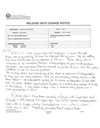
|
2023 mar 5

|
2023 mar 5

|
2023 mar 5
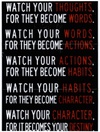
|
More... |
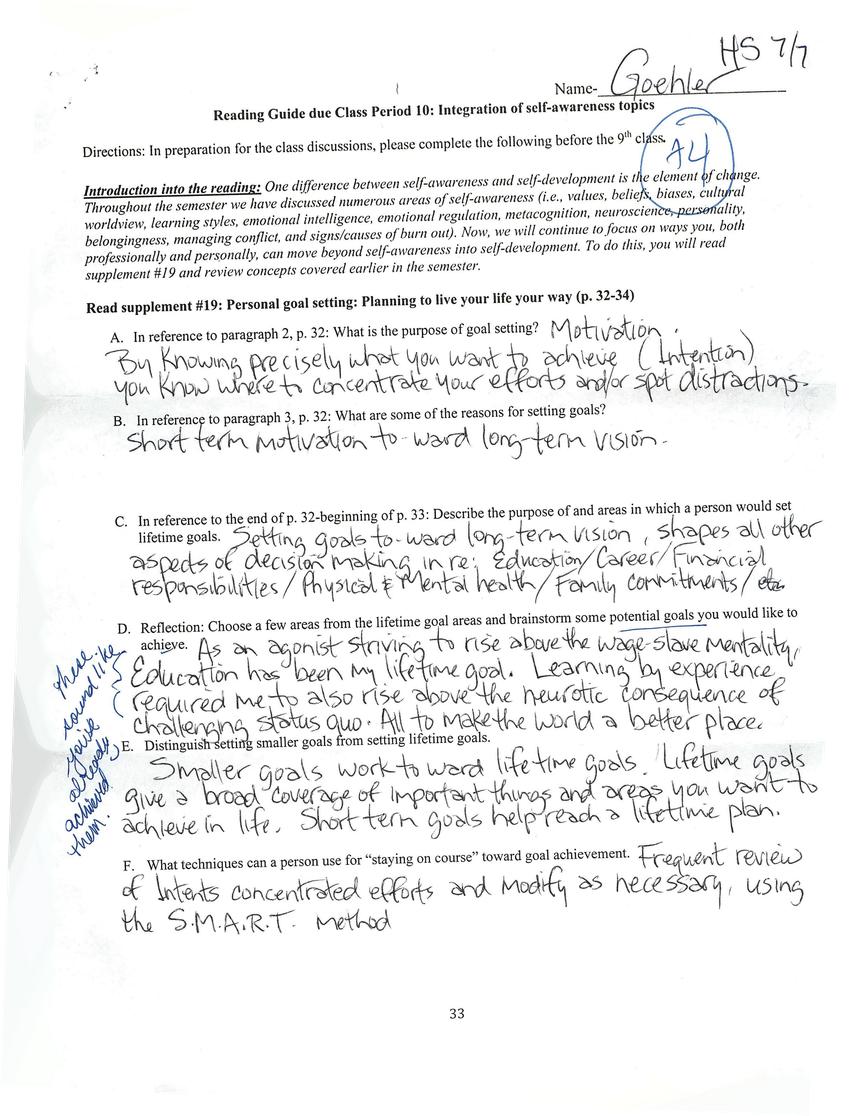
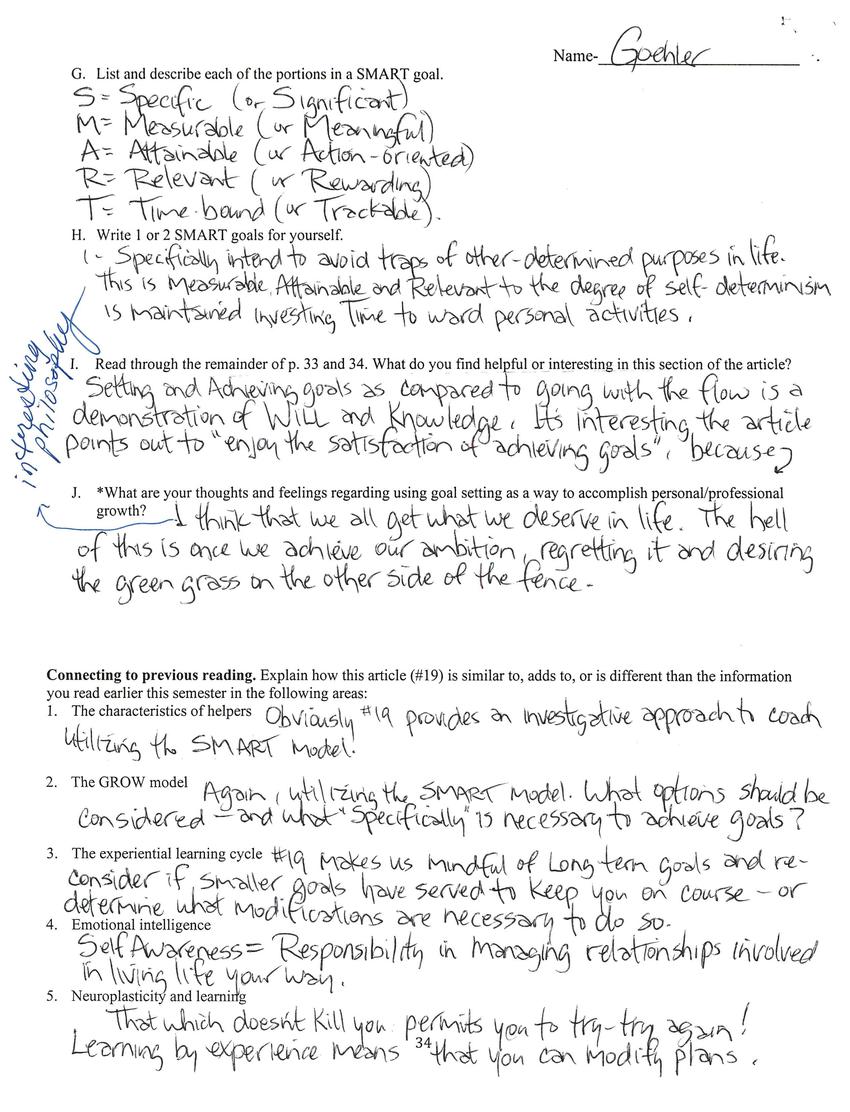
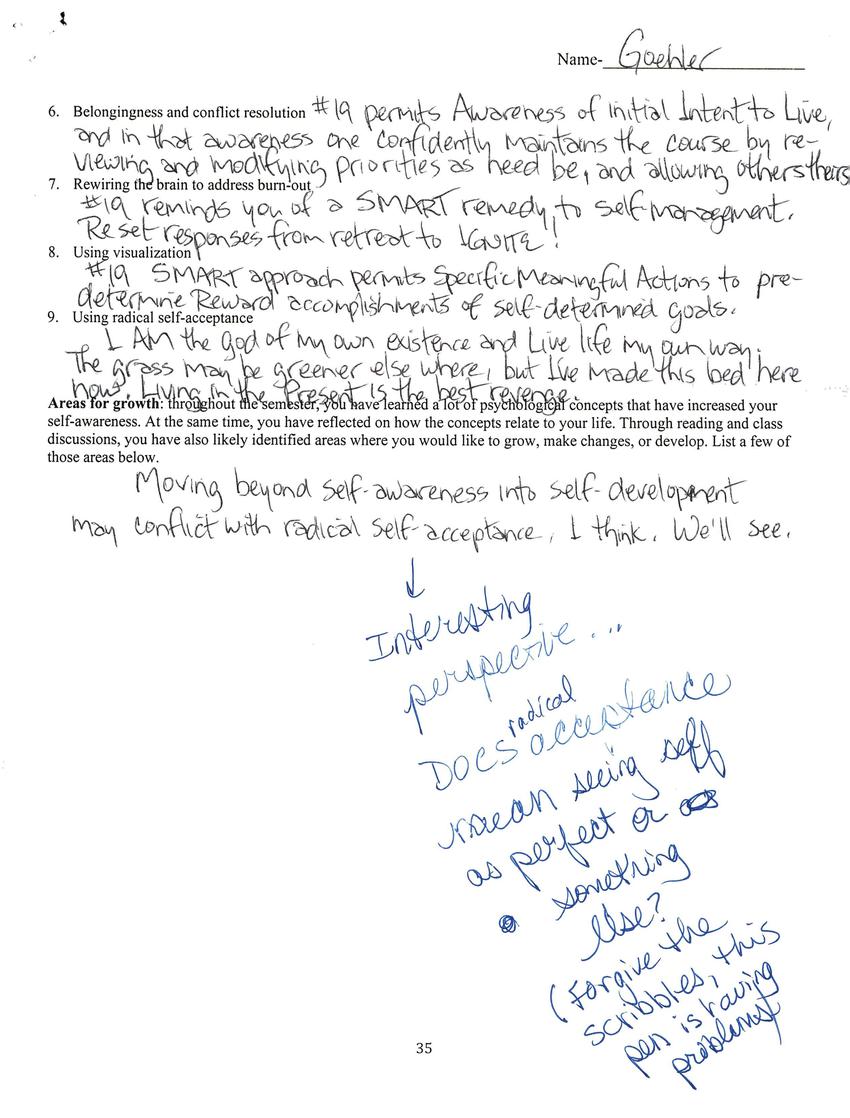
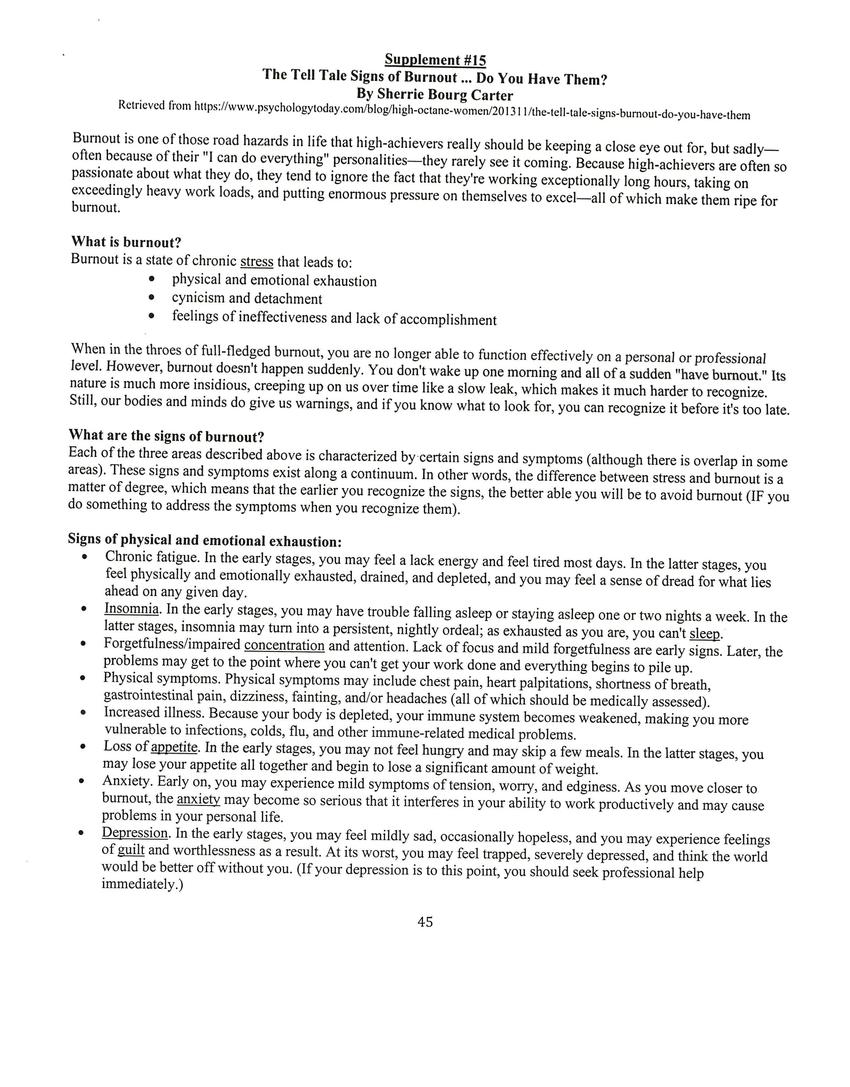
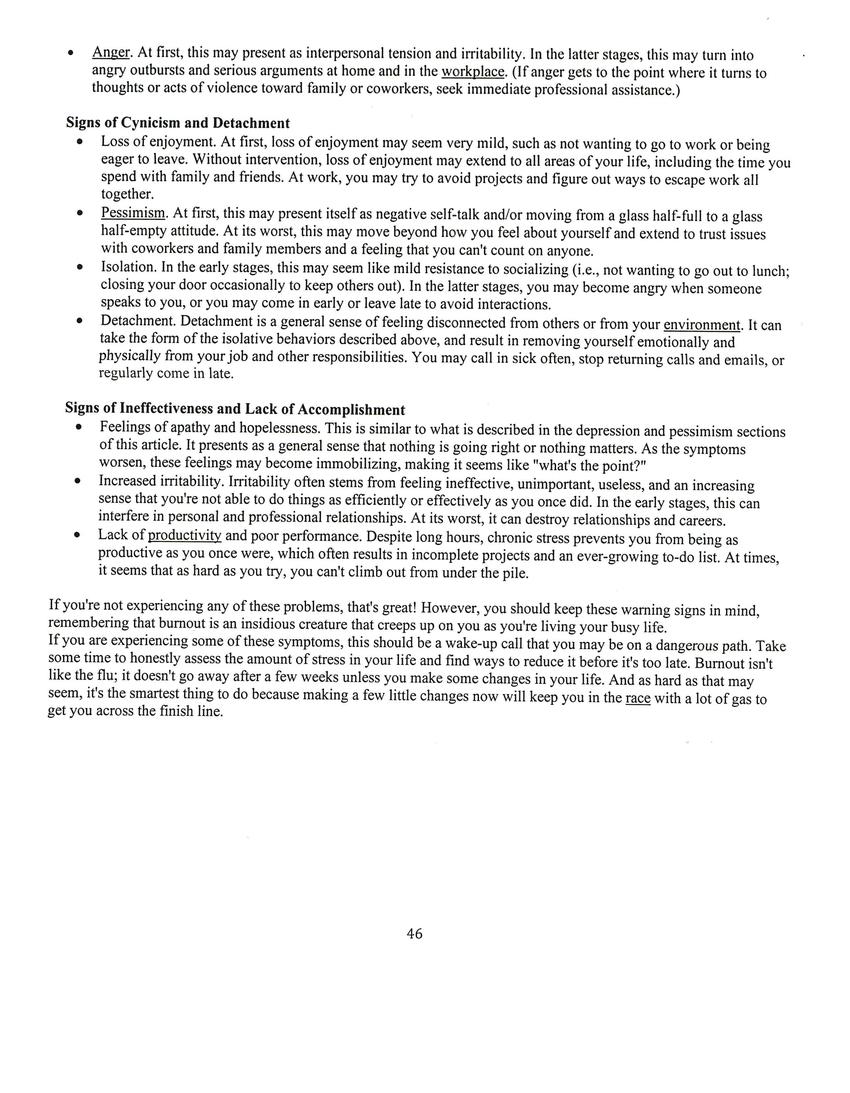
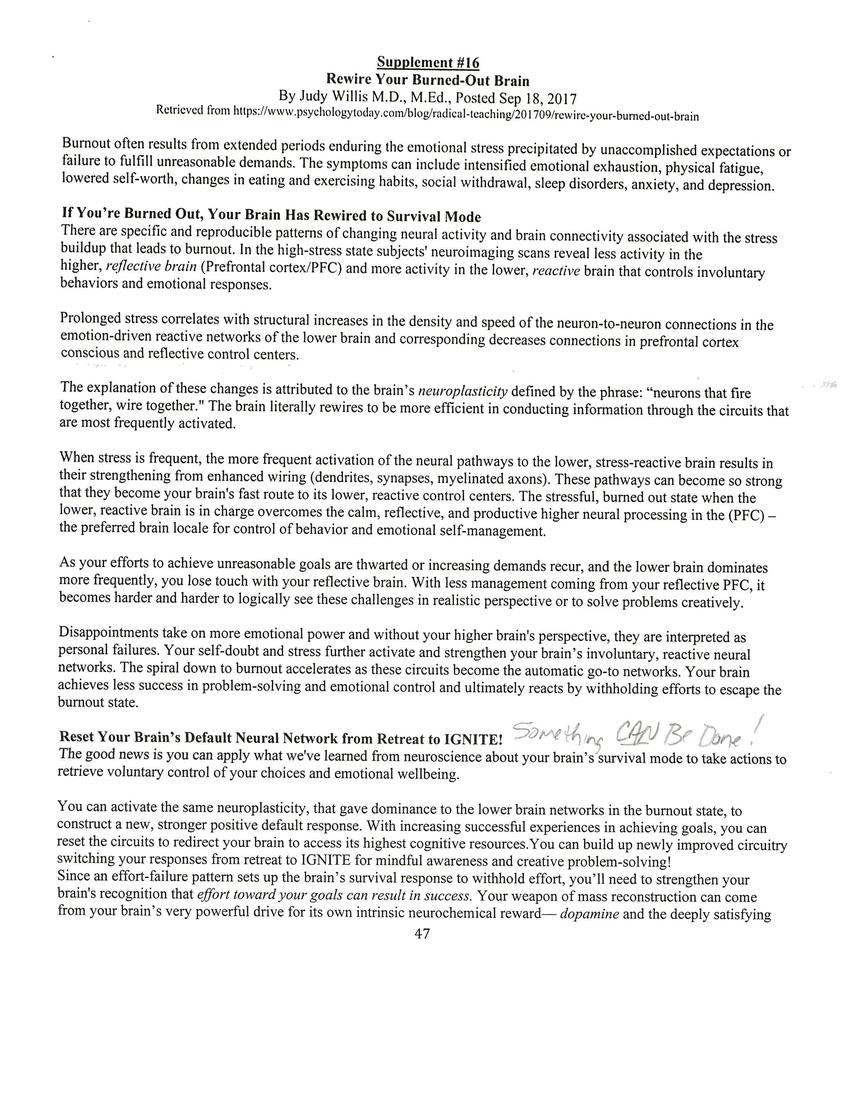

Replies